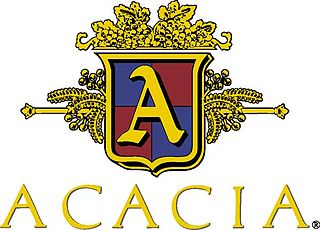 W
WAcacia Winery, also known as Acacia Vineyard or simply Acacia, is a winery in the Carneros Valley appellation in Napa County, California, United States. Acacia Winery was founded in 1979 by co-founder Michael Richmond and others on Las Amigas Road. The winery primarily produced pinot noir and Chardonnay wines including the following lines: Reserve, SVS Wines, Carneros Blend, A, From Acacia, and Estate Pinot (2001-2002). The winery was acquired by Chalone in July, 1986.
 W
WAdelaide Hills is an Australian geographical indication for wine made from grapes grown in a specific area of the Adelaide Hills east of Adelaide in South Australia.
 W
WAkhasheni is an appellation for wines produced around Akhasheni village, Gurjaani district, Kakheti region in eastern Georgia.
 W
WAnthocyanone A is a degradation product of malvidin 3-O-glucoside under acidic conditions. It is found in wine.
 W
WAssociação Portuguesa da Cortiça is the Portuguese Cork Association, a consortium of cork growers and manufacturers. It was founded in 1956 and is based in the town of Santa Maria de Lamas in northern Portugal. The current president of APCOR is António Rios de Amorim.
 W
WA Bacchanalian fraternity is a fraternal society of professional or amateur aficionados of wine and perhaps other alcoholic beverages, typically promoting the wines of represented regions, such as wines from France and Germany. The term derives from Bacchus, the Roman equivalent of Dionysus, god of wine and intoxication.
 W
WBlack spot leaf disease is a physiological plant disorder that affects some grape varieties such as Concord. It is essentially a potassium deficiency that causes the leaves on a vine to turn purple and eventually black as chlorophyll is lost. For wine growers this lack of chlorophyll inhibits the vine's ability to transmit sugar to the grape, leaving the resulting grapes with a low brix count that may be less than ideal for wine making.
 W
WBodegas Muga is a Spanish winery based in Haro, in the Rioja Alta region. The estate was created in 1932 by Isaac Muga Martínez and his wife, Auro Cano, and currently produces several red, rosé and white wines from Tempranillo, Garnacha, Mazuelo, Malvasia and Viura grapes.
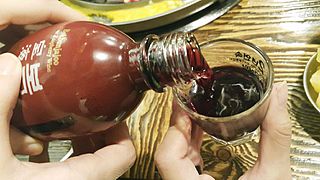 W
WBokbunjaju, also called bokbunja wine, is a Korean fruit wine made from wild and/or cultivated bokbunja. It is produced in Gochang County, Jeollabuk-do, in Damyang, Jeollanam-do, and in Jeju Island, South Korea. It is made by fermenting berries with water. Some varieties also contain rice and reishi mushroom extract.
 W
WThe California Association of Winegrape Growers (CAWG) was established in 1974 as an advocate for California's wine grape growers, providing leadership on research and education programs, public policies, sustainable farming practices and trade policy to enhance the California wine grape growing business and communities. According to their website, major objectives of CAWG's advocacy are: improvements in industry statistical data, funding for viticultural research, reform of federal estate tax law, and preventing misleading grape origin and varietal information on wine labels.
 W
WChampagne Louis Nicaise is a Champagne house located in Hautvillers, the Premier Cru village made famous by Dom Perignon. Varietals grown on the estate include Chardonnay, Pinot Noir, and Pinot Meunier, and only 6,000 cases per year are produced. The current owner-winemakers are married couple Laure Nicaise-Préaux & Clement Préaux. Laure Nicaise-Préaux is the fourth generation of her family to make Champagne in the estate. Clement Préaux had apprenticed under Anselme Selosse. Changes implemented by the couple include lowering the dosage and earning certification in sustainability.
 W
WChâteau Rayas is a vineyard in the Châteauneuf-du-Pape AOC.
 W
WClosure is a term used in the wine industry to refer to a stopper, the object used to seal a bottle and avoid harmful contact between the wine and oxygen.
 W
WCocchi Americano is a quinine-flavored aperitif wine produced by Giulio Cocchi Spumanti in the Asti province of Italy. Cocchi Americano is a variety of Americano. The wine was developed by Giulio Cocchi, and production began in 1891. Cocchi also produces a pink variety of this aperitif, the "Cocchi Americano Rosa", which is slightly more bitter and aromatic than the standard white Cocchi Americano.
 W
WCôte de Sézanne is one of the five sub-regions of the Champagne wine region. It is south of Vallée de la Marne, Champagne, and Côte des Blancs.
 W
WFamille Perrin are the owners of Château de Beaucastel, a Rhône winery in Orange, Vaucluse, France. As of 2006, the family is a member of the Primum Familiae Vini.
 W
WFriuli Grave is a DOC wine region within Friuli-Venezia Giulia. The area has 16,000 acres (6500ha) of vineyards. The appellation is most known for white wines made from Chardonnay, Sauvignon Blanc, Pinot Grigio and Friulano. Pinot Grigio is the most important wine of the appellation, but some red wines are also produced under the Friuli Grave DOC. Reds include from the Bordeaux wine varieties Cabernet Sauvignon and Merlot, along with local variety Refosco dal Peduncolo Rosso. As in Graves wine, the name of the DOC comes from the gravelly soil.
 W
WGonzález Byass is one of Spain's most well-known sherry bodegas. Its origins can be traced to 1835 when it was founded by Manuel María González Angel, who was subsequently joined by his English agent, Robert Blake Byass. The business was further expanded by the second generation of the González family, amongst them Manuel Críspulo González y Soto. The González family assumed sole control of the business in 1988. The firm produces the fino sherry Tío Pepe.
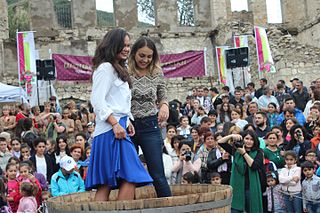 W
WGrape-treading or grape-stomping is part of the method of maceration used in traditional wine-making. Rather than being crushed in a wine press or by another mechanized method, grapes are repeatedly trampled in vats by barefoot participants to release their juices and begin fermentation. Grape-treading was widespread in the history of winemaking, but with the introduction of industrial methods, it now survives mostly as a recreational or competitive activity at cultural festivals.
 W
WGrizzly Peak Winery is a winery near Grizzly Peak in Ashland, Oregon, United States.
 W
WIron Gate Private Wine Management is a Canadian wine storage company which operates a 100,000-bottle subterranean cellar and retails the wine for its collectors. Iron Gate typically stores larger wine collections.
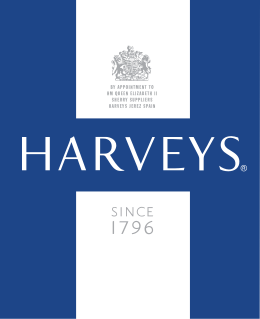 W
WJohn Harvey & Sons is a brand of a wine and sherry blending and merchant business started by John Harvey in Bristol, England in 1796. The business within 60 years had blended the first dessert sherry dubbed 'cream' which has changed little since 1880 and is known as Harveys Bristol Cream. The brand was sold to Beam Global in 2010 and then to Grupo Emperador Spain S.A. in 2015, which is owned by Alliance Global Group of the Philippines.
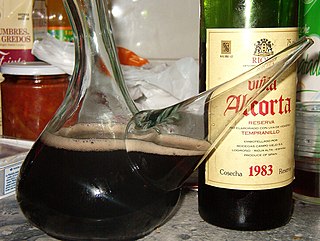 W
WKalimotxo or calimocho is a drink consisting of equal parts red wine and cola-based soft drink. The concoction dates back to the 1920s in Spain, but was relatively uncommon as Coca-Cola was not manufactured in the country at that time. The first Coca-Cola factory opened in Spain in 1953, and the drink was "reborn" and given its current name in 1972. It has since become a classic of the Basque Country region.
 W
WLihing is a type of Malaysian rice wine that originated from the state of Sabah. It was made from "pulut", a glutinous rice and is a traditional rice wine for the Kadazan-Dusun people. The rice wine is also referred as hiing, kinarung, kinomol, kinopi, linahas, sagantang as well tapai. They are different from one another, but all are made from rice-based drinks. Lihing is sold widely in Sabah including in some major hotels.
 W
WThe Macau Wine Museum is a wine museum in Sé, Macau, China. It is located next to the Grand Prix Museum.
 W
WThe Minnesota Grape Growers Association (MGGA) was established in 1976 to further the art and science of growing grapes in cold climates. The association sponsors workshops, tours, tastings of locally produced wines and sponsors an important annual conference on cold climate viticulture.
 W
WMission Estate Winery is New Zealand's oldest surviving winemaking concern, first established in the Hawke's Bay in 1851 by French Catholic Marist missionaries for producing sacramental wine. It is one of the largest wineries in the Hawke's Bay and remains wholly New Zealand owned.
 W
WMontagne de Reims is one of the five sub-regions of the Champagne wine region. It is north of Vallée de la Marne, Côte de Sézanne and Côte des Blancs.
 W
WMoulin-à-Vent is a French red wine of controlled designation of origin produced on the border between the Rhône and Saône-et-Loire departments.
 W
WMuscatel is a type of wine made from muscat grapes. The term is now normally used in the United States to refer to a fortified wine made from these grapes rather than just any wine made from these grapes. This fortified muscatel became popular in the United States when, at the end of prohibition, in order to meet the large demand for wine, some poor strains of muscat grapes mixed with sugar and cheap brandy were used to produce what has since become infamous as a wino wine. This kind of fortified wine has, in the United States, damaged the reputation of all muscat-based wines and the term muscatel tends no longer to be used for these "better" wines in the United States. In other markets the term Muscatel, or Moscatel, refers to a wide range of sweet wines based on these grapes.
 W
WNicolas is a French wine retailer, which also has stores in other countries.
 W
WOenophilia is a love of wine. In the strictest sense, oenophilia describes a disciplined devotion to wine, accompanying strict traditions of consumption and appreciation. In a general sense however, oenophilia simply refers to the enjoyment of wine, often by laymen. Oenophiles are also known as wine aficionados or connoisseurs. They are people who appreciate or collect wine, particularly grape wines from certain regions, varietal types, or methods of manufacture. While most oenophiles are hobbyists, some may also be professionals like vintners, sommeliers, wine merchants, or one who tastes and grades wines for a living.
 W
WPolish wine viticulture and origins have a history dating back to the nation's founding in the tenth century under the Piast dynasty. Like other old world wine producers, many traditional grape varieties still survive in Poland, perfectly suited to their local wine hills. The most popular varieties of grapes for the production of red wine are Regent, Rondo, Pinot Noir, Maréchal Foch, Cabernet Cortis, Tryumf Alzacji, Cascade and Dornfelder. For white wine production, Solaris, Riesling, Seyval Blanc, Pinot Gris, Johanniter, Jutrzenka, Hibernal, Aurora, Bianka, Traminer, Jutrzenka and Siberia are mostly used. Following the Second World War, most wineries were nationalized under the Polish People's Republic communist regime. After the collapse of communism and return to capitalism, the market economy returned, international wine companies moved back in and a period of consolidation followed. Modern wine-production methods have taken over in the larger wineries, and EU-style wine regulations have been adopted, guaranteeing the quality of the wine. Today, wine production in Poland is an industry with 151 officially registered wineries to sell and produce grape table wines in Poland as defined by the national wine laws that came into being in 2008 and were updated later on.
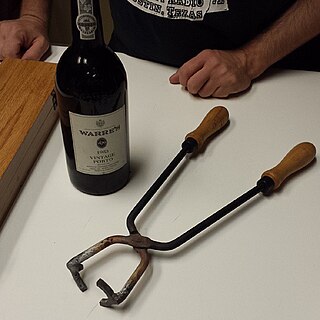 W
WPort tongs are a special set of tongs designed to open wine bottles that are sealed with a cork. The tongs are heated over an open flame and held against the neck of the wine bottle for 20–30 seconds. The heated section of bottle is then cooled with a damp cloth or ice water, causing the glass to fracture due to thermal expansion. The result is generally a clean, predictable break. Any possible shards of glass are strained out, along with any sediment, when pouring the wine into a decanter.
 W
WThe Port Wine Museum is a museum located in Porto, Portugal. The museum recounts the history of port wine and its relevance to the city and the country. The museum is located in an 18th-century warehouse, the Companhia Geral da Agricultura das Vinhas do Alto Douro, next to Douro River.
 W
WQuarterly Review of Wines, abbreviated QRW, is a U.S. quarterly publication with an emphasis on wine, food and travel. Published by Richard L. Elia, the first issue was released in 1977. QRW contributors include Michael Broadbent MW, David Peppercorn MW, Serena Sutcliffe MW. Clive Coates MW, Rosemary George MW, Ed McCarthy, Jacqueline Friedrich, Burton Anderson and Gerald D. Boyd. On 1 November 2011, the magazine discontinued its print version and went online.
 W
WRecioto di Soave DOCG is an Italian wine DOCG subregion of the Soave DOC. It was granted DOCG status in 1998. Recioto di Soave DOCG is made in the recioto method from grapes which have been dried out, traditionally on straw mats, for several weeks or months after harvest. A sweet wine, Recioto di Soave must be made of at least 70% Garganega grapes, and no more than 30% Trebbiano di Soave grapes allowed per DOCG regulations.
 W
WRimon is a brand of pomegranate wine produced in Israel. In recent years, Pomegranate wine was industrialized by Rimon Winery in the Galilee and branded as Rimon.
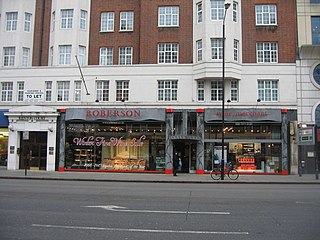 W
WRoberson Wine is an online fine wine merchant based in London.
 W
WRouge d'Ottrott is a Pinot Noir red wine produced in the commune of Ottrott, in the Bas-Rhin. It is a geographical denomination within the registered designation of origin Alsace AOC, which mainly produces white wines. It is recommended drunk at 10°-16 °C.
 W
WChâteau Saint Georges is a Bordeaux wine producer located on the Pavie hill in Saint-Émilion. This 5 hectares estate is located between Château Pavie and Château La Gaffelière.
 W
WShesh i Zi is an Albanian red wine variety.
 W
WSOMM TV is a food and wine streaming network launched in 2019 by SOMM director Jason Wise, Christina Wise, Jackson Myers, Diane Carpenter, Brian Reshefsky and Eric Esrailian.
 W
WThe Unified Wine & Grape Symposium (UWGS) is an annual wine and grape industry event, held every January in Sacramento, California, United States of America. Since 1995 the American Society for Enology and Viticulture (ASEV) and the California Association of Winegrape Growers (CAWG) have worked together to develop the trade show combined with symposium. The Unified Symposium also hosts a trade show with over 650 vendors displaying their products and services to the more than 14,000 people who attend annually.
 W
WVallée de la Marne is a sub-region of the Champagne wine region. It is south of Champagne and Montagne de Reims, and north of Côte de Sézanne and Côte des Blancs. The sub-region is located on the riverbanks of the Marne. Its soils are more variable than in other Champagne sub-regions, and it contains only two Grands Crus villages: Ay and Tours-sur-Marne. Pinot Meunier is the main grape variety.
 W
WVathypetro is an archaeological site, four kilometres south of the town of Archanes on Crete (Greece). It contains some of the oldest wine presses in the world. Excavations began in 1949 by the Greek archaeologist Spyridon Marinatos. The estate contains a manor house or villa which had a prominent role in the rural region around Archanes. The complex consists of several buildings, courtyards and workshop spaces. Next to the individual houses is the Minoan wine press, a plant for the production of olive, a Minoan kiln and ceramics, and the remains of an ancient pottery workshop.
 W
WVilmart & Cie is a Grower Champagne founded in 1890 in the Montagne de Reims region. Its Premier cru sites are in Rilly-la-Montagne and Villers-Allerand. On 11 hectares of vineyards the house produces 8,500 cases annually. The vineyards are planted with 60% chardonnay, 36% pinot noir, and 4% pinot meunier.
 W
WVin cuit or cooked wine is an artisanal dessert wine produced in Provence, France. It is made by heating grape juice without boiling it so that the grape juice becomes concentrated and syrupy. It is then fermented in barrels. The alcohol content is around 14%.
 W
WWincarnis is a brand name of a British tonic wine, popular in Jamaica and some other former British colonies. The name is derived from "wine carnis", from the Latin meaning "of meat." It is a fortified wine (17%) now made to a secret recipe of grape juice, malt extracts, herbs and spices, but it no longer contains meat. Wincarnis has a similar taste to sweet sherry.
 W
WWine Ark is an Australian wine storage provider. Established in 1999, Wine Ark stores over two million bottles of wine in 16 cellars across Australia, for clients in over 30 countries in state-of-the-art storage facilities.
 W
WWine dispensers are devices designed to serve and preserve wines. Dispensers store stored wines at cool temperatures and oxygen is prevented from entering the bottle when pouring. Wine dispensers vary greatly in use and function, most commonly wine dispensers are used in restaurants and bars to prevent spoilage when selling wine by the glass. The dispenser has the additional benefits of controlling the amount of the pour limiting over pour.
 W
WWine for the Confused is a documentary hosted by John Cleese. It is a light-hearted introduction to wine for novices. Cleese guides viewers through the basics of wine types and grape varieties, wine making, wine tasting and terminology, buying and storing wines, through direct narrative and interviews with wine makers and wine sellers. The film duration is 92 minutes and includes visits to wineries in California. The film concludes with a large group conducting a blind wine tasting. One of the tasting results was the fact that most tasters could not distinguish between red wine and white wine. Another was that most tasters rated an inexpensive wine equal in taste to an expensive prestige wine, and both of these out scored the rest of the mid-priced and high-priced wines in the blind test.
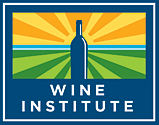 W
WThe Wine Institute is a public policy advocacy organization representing over 1,000 California wineries and affiliated businesses. Led by Bobby Koch, its mission is "to initiate state, federal, and international public policy to enhance the environment for the responsible production, consumption and enjoyment of wine." The Wine Institute is the only advocacy group representing the California wine industry at the state, federal and international levels.
 W
WThe Wine Museum and Enoteca is a Brazilian museum and enoteca, located in Porto Alegre in the old building of the plant's gas tank. The museum carries approximately 250 varieties of wines produced by 32 wineries in Rio Grande do Sul, with descriptive guidance products. The Enoteca is the only wine museum in Brazil, with international standards comparable to the French, and the second in Latin America in the public domain. The collection of the museum also keeps parts and equipment used in the initial period of industrialization of wine.
 W
WZymology, also known as zymurgy is an applied science which studies the biochemical process of fermentation and its practical uses. Common topics include the selection of fermenting yeast and bacteria species and their use in brewing, wine making, fermenting milk, and the making of other fermented foods.